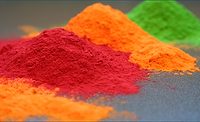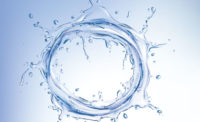Global Demand for Cost-Effective and Durable Powder Coatings on the Rise

Asia-Pacific Powder Coatings Market

World Powder Coatings Market


Since its inception, the powder coating industry has witnessed a significant growth. Powder coating processes were adopted in 1983 and since then, powder coating has gained immense popularity worldwide in several industrial sectors. Today, powder coating finds applications in the appliances, automotive, architectural and furniture industries. Powder coatings offer long lasting, economical and a durable quality finish for metal components and products. Powder coating maintains the quality and durability of a product even when it is exposed to harsh weather conditions. The demand for powder has increased, as it does not contain solvents and is free of volatile organic compounds (VOC). A recent report published by Allied Market Research on the powder coatings market offers valuable insights, such as the market share, size and growth. Further, the current trends and growth opportunities in the industry are highlighted in detail.
Cost-Effective Coating Systems
Powder coating is a cost-effective and an efficient technique to protect metal and wood products from corrosion and damage. Over-sprayed powder coating can be recycled and used again, hence proving to be a cost-effective process. However, a lot of waste is generated by the powder coating industry. This needs to be addressed as it is essential to adopt environment-friendly materials and industrial processes.
It is important for heavy equipment manufacturers and their suppliers to identify the right coating technique that is best suited for their requirement. The objective is to reduce the overall costs of the entire process without compromising on quality and performance. All the coating alternatives are not the same. Some coating techniques can deal with high temperatures, whereas other techniques are efficient against UV radiation. It is vital to identify the opportunities and the applications of powder coating. There are several factors that hinder the powder coating transfer efficiency including, inadequate equipment settings, airborne contaminating agents, lack of high-quality part grounding and excess usage of reclaimed powder. When it comes to liquid coating, new technologies such as high-solid coatings play an important role to enhance the transfer efficiencies and the overall finishing quality. High-solid coatings make use of fewer coats, improve resistance against corrosion and edge retention.
It is important for original equipment manufacturers (OEM) and coating supplier programs to have a common goal i.e., offer a quality finish at minimum cost. A coating supplier should offer its clients fair prices for the overall products, keeping in mind a few parameters such as, equipment upgrades, adequate painter training, and preventive maintenance programs. Finishers need to invest their resources in the ongoing training programs to cut costs by increasing knowledge and reduce waste. Coating suppliers can educate the users of powder coating in terms of the overall functionality of the coating system.
High Cost of Paints Affecting the Coatings Industry
In the last couple of years, the cost of raw materials that are used for manufacturing coatings has increased significantly. This has affected the coating industry on a global scale. The cost of raw materials such as epoxy, copper and titanium dioxide has increased by 20% in the last one year or so. Moreover, the cost of zinc metals has increased by 50%. The growth of economy in the U.S., Europe and China has increased the demand for raw materials in these regions. The rising costs of raw materials has created a major challenge for the supply-side of things. Thus, the cost of protective, marine and powder coatings has increased. Geir Boe, Group Executive Vice President, Jotun Performance Coatings, said, “We saw this trend and strived to avoid a situation where prices on our products should be affected. But when the costs of key components continue to increase significantly over time, it leaves us with no other option but to raise the prices on our affected products.”
The global powder coatings market is set to grow in the next decade owing to high demand from the automotive industry. Technological advancements and progress in the powder coating sector could potentially find new applications in several industrial sectors. The growth in demand for automobiles in the Asia-Pacific region especially in China and India will influence the growth of the powder coatings market.
Looking for a reprint of this article?
From high-res PDFs to custom plaques, order your copy today!









